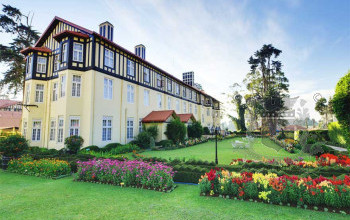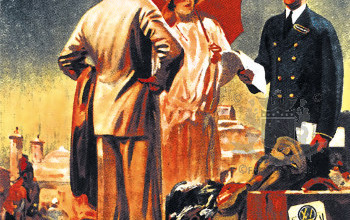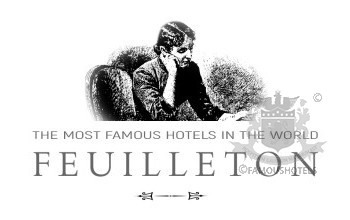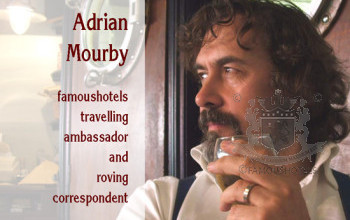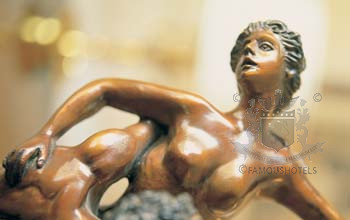Wanderwell, Aloha
( words)
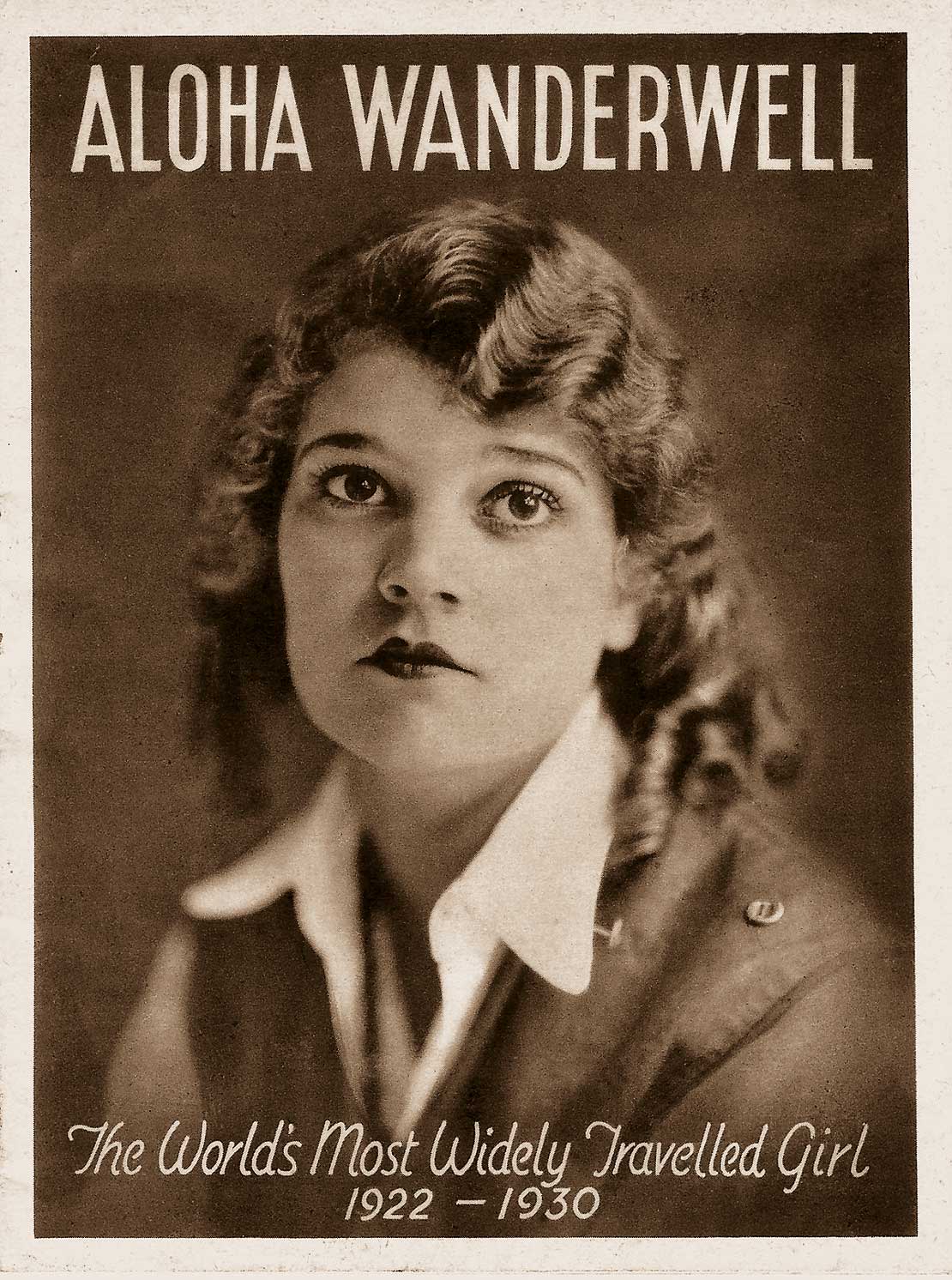
Fluent in French, Spanish, Italian, and marginally fluent in Russian, Chinese and Japanese, Aloha Wanderwell – nomen est omen – was the first woman to drive around the world in a customised Model T Ford.
Aloha Wanderwell (* Idris Hall at Winnipeg 13 October 1906; † at Newport Beach, California 4 June 1996) was the daughter of British Army reservist Herbert Hall, an extremely prosperous Vancouver Island rancher and developer. In 1918, Aloha enrolled in a French boarding school. Reading about the arrival of Capt. Wanderwell in Paris, she made it her destiny to meet him. Obtaining his autograph, Aloha struck up a conversation with Wanderwell persuading him to make her part of the expedition. Aloha was fluent in French, Spanish, Italian, and marginally fluent in Russian, Chinese and Japanese. Aloha functioned as a translator, a driver, seamstress/laundress and all-round goodwill ambassador. A six-foot beauty with piercing eyes and engaging smile, Aloha emerged as the star of the expedition, capturing the hearts and minds of people everywhere.
Aloha recalls in her autobiography, Call to Adventure!, a conversation the Captain had with her mother: “This is no millionaire’s pleasure tour, Mrs. Vernon. We are to visit as many countries in the world as possible- we’re to earn our way. I don’t pretend the thing is any more than a gamble, but there will be valuable records and moving-picture film. I left Detroit a few months ago with the specially built and equipped car; I earned enough for tramp-steamer fare to England, sailing from New Orleans; in England I made enough to come to France. I’m getting assistants as I go along. They may stay a short time or the whole period—that is up to them; but I need someone to pose in the moving pictures and to appear on stage when they are being shown.”
By taking command of Unit 2, Aloha became the first woman to drive from Paris to Peking, as well as the first woman to girdle the globe south of the Himalayas. Together, the two Ford cars covered Spain, Portugal, Morocco, Italy, San Marino, Switzerland, Belgium, Holland, Germany, Poland, Russia, Ro mania, Bulgaria, Greece, Turkey, Syria, Palestine, Egypt, crossing the Red Sea then to India, Burma, Indo-China, Siberia, Japan, the Sandwich Islands, and arrived by steam ship January 5, 1925 in San Francisco, for the last leg of the around the world tour.
Throughout India and China, travels were especially difficult. Aloha wrote they used kerosene for gasoline, water and elephant fat for oil in the engine, and crushed bananas for grease in the Ruckstell differentials, and in China, where civil war in 1924 made gasoline unavailable, coolies towed the car for hundreds of miles. Cars often had to be towed or pushed through mud and rivers. A near wreck passing over a bridge almost lost Unit 2. Aloha recalled,
“A sloping bank to the wood bridge turned abruptly and Number Two came to a standstill with the front wheel deeply off the edge. My poor little lizzie made a heroic effort to stop, I pushed until I thought the pedal would break off. But I was on the bridge with no more than a flat tire and bent steering. We made the necessary repairs on the spot.”
Captain Wanderwell kept the expedition alive in a time where financial contributions from sponsors were unheard of. He sold ads and bartered with local merchants to bring in the revenue that kept them moving forward. In Tianjin, China, for example, the Astor Hotel was one of her official sponsors, and hosted the team when they passed through Tianjin. According to a hotel's historic menu from today (ture or well invetned?), Aloha requested for dinner: Poached Salmon with Waldorf Salad; Breaded Lamb Cutlets with Reform Sauce; and Poached Pears with Vanilla Ice Cream and Hot Chocolate Sauce.
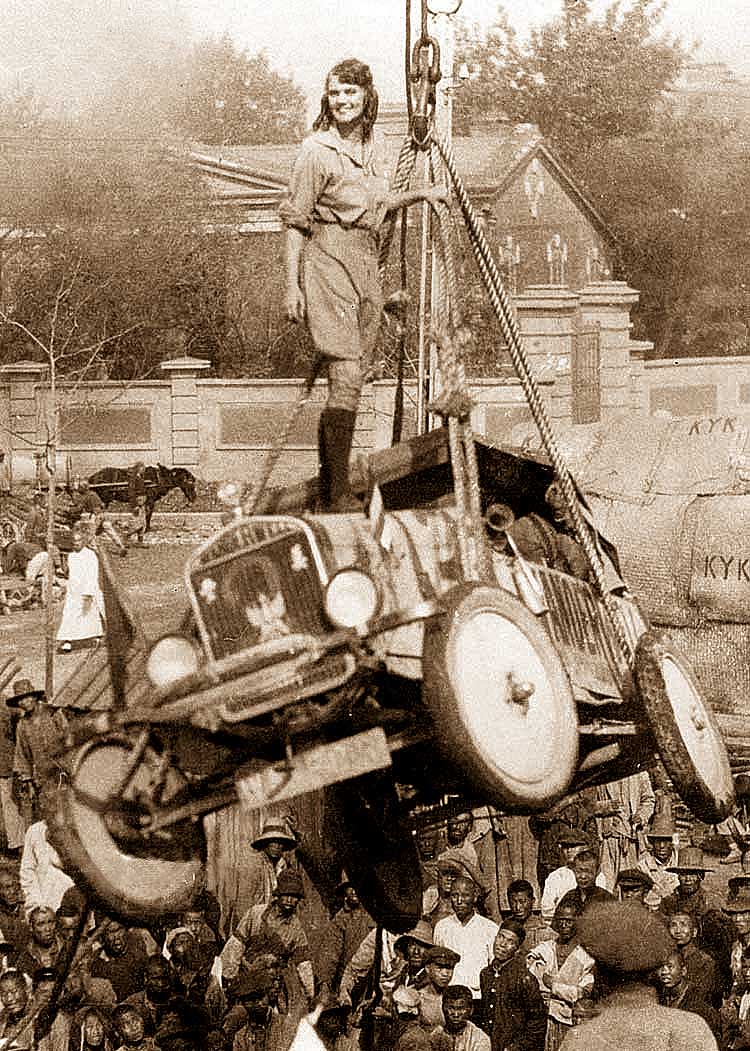
Wanderwell cranked tens of thousands of feet of film through 35-millimeter movie cameras along this fantastic journey. These films were shown in theaters to paying audiences in every city they visited, after which souvenir booklets of the trip were sold, thereby generating the money needed to buy gas and supplies so the expedition could continue.
Sources:
//thecanadianencyclopedia.com/index.cfm?PgNm=TCE&Params=A1ARTA0010377
//tmodelman.com/wanderwell.php
//lib.wayne.edu/resources/digital/vmc_newsreels/video.php?vid=5_25


